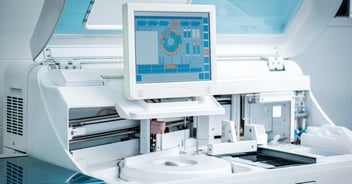Changes in the medical device business landscape
Importance of the software is increasing and software is becoming the key or only proprietary component in medical device products. The change is taking place in several ways:
Earlier software had only a small role to play. It had only a component role or it was viewed as a small piece of a larger system. In these cases software had a supportive role in the medical device systems, and was not something that was constantly developed further. No roadmap or development plans for the software – that was the situation for years in medical device companies.
Technical debt was the outcome of this approach. Customers couldn’t ask for any changes or new features to the software, and could only expect a cumbersome and lengthy implementation of a medical device system. Sometimes the time that the implementation took was even years rather than months. This was putting pressure on to start legacy software maintenance and modernization actions toward a more agile and robust software environment.
Some end users of medical devices have more complex use cases and thus appreciate more extensive software solutions as well. Those customers are willing to pay for the additional features or functions. This is also changing the commercial models for the software and new revenue streams can be expected. However, the new business environment requires knowhow in SaaS or software productization strategies and this is something that these companies are lacking.
Also patient-centricity is increasingly in focus in medical system design. More simplified and streamlined workflows in all patient facing activities are expected by the users (MDs, research nurses etc.). In addition to this, regulatory requirements like accessibility requirements have impacted software design practices in the medical device industry. The industry would greatly benefit in adopting service design or user experience design practices in use.
Challenges in R&D processes
Medical device industry’s R&D processes are still very much hardware-centric and slow-moving. Agile transformation is still in infancy in Medical R&D organisations. Bigger mindset change is required so that the time required for new product introduction can be reduced. Even in a highly regulated environment it is possible to develop software and solutions in an agile way.
Medical device industry’s long product lifecycles and increased M&A activity lead to a growing portfolio of products to maintain. Increasing technical debt and complexity puts pressure on legacy software maintenance and modernization. This also leads to a situation where all software product roadmap planning should be done on a portfolio level in a transparent way by addressing dependencies and timelines.
Challenges in access to talent
There is a high demand for technology and design professionals in the medical device industry. However, software and design talent don’t see the heavily regulated and conservative industry as their preferred choice and many choose custom software development companies instead as their future employer.
Our experience at Vincit is that many developers are looking for long term projects where high quality standards are applied and it is possible to do high quality code. Developers are also looking for projects that serve a higher purpose. We at Vincit have witnessed that the medical device industry is answering to these expectations, and we have been able to find passionate developers and designers to medical software projects. Our modern agile approach within the regulated framework and our domain knowledge makes it attractive for a software developer to work with medical projects.
Why Vincit is the perfect partner
During Vincit’s strategy process it became obvious that Vincit is in a perfect position to guide medical device companies through the changes in the medical business landscape.
Since 2007 Vincit has developed medical device software for embedded and web environments to multiple medical device companies. Vincit has also ISO 9001 and ISO 13485 certified quality management systems. Vincit can guide medical device companies into agile software development and can help in transferring medical software into the cloud.



